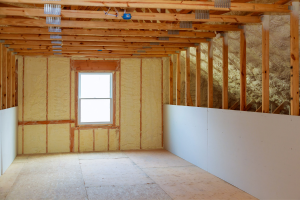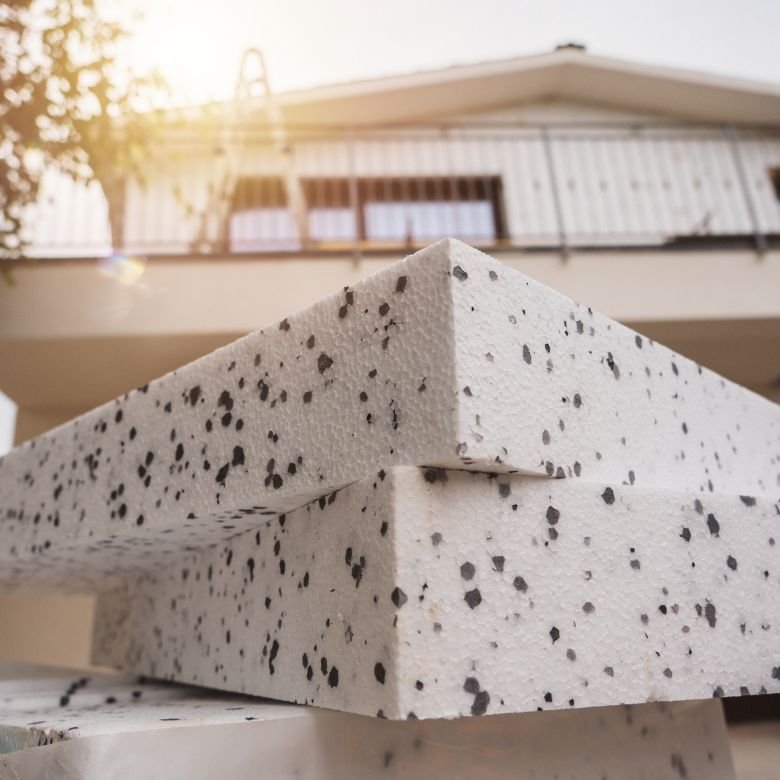Ensuring the right temperature inside buildings significantly affects the comfort of our lives. However, thermal insulation allows us not only to retain heat in our homes during the autumn and winter seasons. It also contributes to noise reduction, environmental protection and savings on heating systems. Today, you will learn about the advantages of individual thermal insulation materials. Read on to learn more!

What is thermal insulation?
Thermal insulation is a term used in the construction industry to estimate the ability of individual materials to retain heat inside buildings. The most frequently used measures in this case are the heat transfer and thermal conductivity coefficients. Their values should be as low as possible (for best thermal insulation). The level of thermal resistance is also important, but there is an inverse relationship in that case. The higher the resistance, the better.
To calculate the thickness of thermal insulation you should use, you must take the following into account:
- heat transfer coefficient,
- thermal conductivity coefficient,
- thermal resistance of a given material.
You can use the thermal insulation calculators available on the Internet to avoid mistakes.
The ability to stop heat loss can be estimated for most building and construction elements. This includes roofs, walls, floors, windows and doors, the tightness of which has a significant impact on the thermal insulation of a room.
Thermal insulation materials in construction are therefore of fundamental importance at every stage of work. Before learning about the properties of popular products used to provide thermal insulation for foundations, roofs and floors, note that the raw materials used during construction, such as wood and concrete (read about admixtures and additives for concrete), also count. The latter, which is commonly used, is characterised by a high thermal conductivity coefficient, therefore additional insulation layers are necessary in concrete buildings.
Where should thermal insulation be used?
High-quality thermal insulation is important not only in residential buildings but also in factories, workplaces, office buildings and warehouses. Keeping the appropriate temperature allows you to maintain the properties of individual products (especially in the food, medical and cosmetics industries) and the desired work efficiency. Moreover, thermal insulation materials most often also help to maintain acoustic insulation, which also affects our everyday comfort.
Thermal insulation can be divided into:
- internal,
- external.
Each of them affects the level of heat retention in the building and has specific applications. In some cases, external thermal insulation of building walls may be impossible. In that case, internal insulation should be used. Thermal insulation applies to almost all structural elements, including:
- foundations,
- walls,
- roofs, attics and ceilings,
- floors,
- doors and windows.
Thermal insulation is only effective if it is installed correctly. Therefore, it is unacceptable to apply thermal insulation to contaminated or damp surfaces. If we use layered insulation, similar principles apply: sterile conditions and high-quality materials will ensure the best thermal insulation.

Types of thermal insulation
What are the benefits of foundation insulation and what materials should be used? This is a key question to ask yourself before starting thermal insulation work. Insulating and strengthening the foundations has a significant impact on the level of thermal insulation of the whole building. In addition, such measures protect the walls against cracking, loss of airtightness and mould. The type of thermal insulation to be used should depend on the specificity of the construction site and the entire surroundings. What about insulation of walls, floors and other elements? We have collected the most important information on this topic for you.
Thermal insulation can be installed both during construction and subsequent renovation stages. However, the sooner we consider insulating materials, the better. In this way, we will make our house energy-efficient and reduce our bills. The most popular and effective thermal insulation products are:
1. Polystyrene foam
Polystyrene foam is made of polystyrene and is characterised by a relatively low thermal conductivity coefficient. Read more about insulating your home with polystyrene foam.
2. Wool
As an insulating material, it is used in the form of boards or granules. The use of wool is the best way to achieve ecological thermal insulation.
3. Polyurethane
This is a material worth smore attention. Innovative technologies allow us to use it in the form of traditional or sprayed PUR foams. It is characterised by a very low thermal conductivity coefficient and is resistant to moisture. Polyurethane is also lightweight, which allows it to be easily processed. At the same time, it is durable and effective.
PUR foams are universal products used to insulate various surfaces. Spray insulation, which is more and more popular, guarantees:
- excellent adhesion,
- rapid application,
- flexibility,
- durability,
- resistance to damage and dirt,
- time and money saving.
The offer of the PCC Group includes the best thermal insulation PUR foams – make sure to check out the Crossin and Ekoprodur brands. Their materials guarantee the efficiency and stability of thermal insulation.
- It is also impossible not to mention high-quality building materials, which include PIR thermal insulation boards. They enable, e.g.: thermal insulation of foundations, floors, roofs and walls. The PIR boards available in the assortment of the PCC Group can be used in residential and industrial buildings. They are characterised by easy assembly, processing and durability.
- Self-adhesive thermal insulation is also popular. Thermal insulation mats can be used, e.g., in the attic, where it will not only prevent heat loss but also excessive heating of the room. Thin thermal insulation has many useful applications!

What type of thermal insulation should you choose for your house?
Choosing the right thermal insulation is very important. To avoid mistakes, it is best to consult an expert, e.g., a construction specialist, interior designer or manufacturer of thermal insulation materials. You can also analyse the conditions in your building or surroundings. It will be useful to determine the humidity level, sun exposure and type of ground.
It is also worth looking at the advantages of individual building materials. Ecological wool or perhaps proven polystyrene foam? Most customers currently use PUR foams, which do not absorb moisture, are stable, versatile and resistant to damage. The above-mentioned PIR thermal insulation boards are also more and more popular; they are characterised by:
- low value of the heat transfer coefficient,
- resistance to bacteria, moulds and fungi,
- the highest class of thermal insulation and positive impact on the natural environment,
- easy installation,
- durability and tightness,
- high level of fire protection,
- versatility.
Whatever type of thermal insulation material you choose, go for the highest quality. The PCC Group makes sure that each of its products not only does not deviate from the accepted standards but also sets new, high ones.
Why is thermal insulation so important?
Thermal insulation of foundations, roofs, walls, floors and other elements is an aspect that cannot be underestimated! It is much more than our thermal comfort. High level of thermal insulation means:
- additional protection of the building (e.g. against wall cracking),
- saving money (low heating bills and avoidance of renovations with the purpose of insulating the building),
- strengthening acoustic insulation,
- ensuring appropriate storage temperature for individual products (both in residential and industrial buildings),
- increase in property value,
- environmental protection thanks to the use of ecological materials.
The PCC Group is one of the largest manufacturers of polyurethane systems, which are distinguished by their high quality. The products available in the offer of the Group are constantly subjected to tests to ensure the highest quality performance parameters and safety. If you are planning a construction project, you must test them!
- https://www.muratorplus.pl/technika/izolacje/materialy-izolacyjne-przeglad-dostepnych-rozwiazan-aa-fgBr-H9Ct-NHb6.html
- https://www.rynekinstalacyjny.pl/artykul/izolacje-techniczne-3/44007,izolacje-a-standardy-energetyczne-budynkow-1
- https://www.rockwool.com/group/advice-and-inspiration/product-types/thermal-insulation/
- Dreger M., Izolacje z pianki poliuretanowej a wyroby z wełny mineralnej, Izolacje 2011, 4, 44-47.
- Lewandowski W.M., Bieszk H., Wilczewski T., Buzuk M., Szymański S., Heat transfer from flat surfaces through the one side opened panel of cellular material, „Advances in Engineering Heat Transfer”, 1995.
